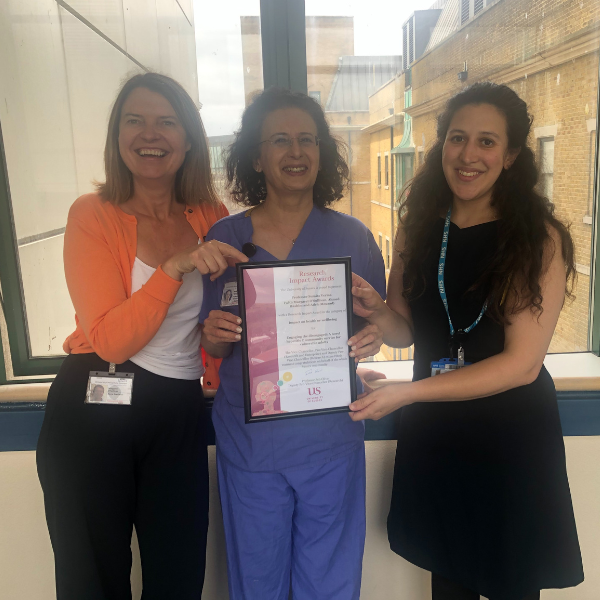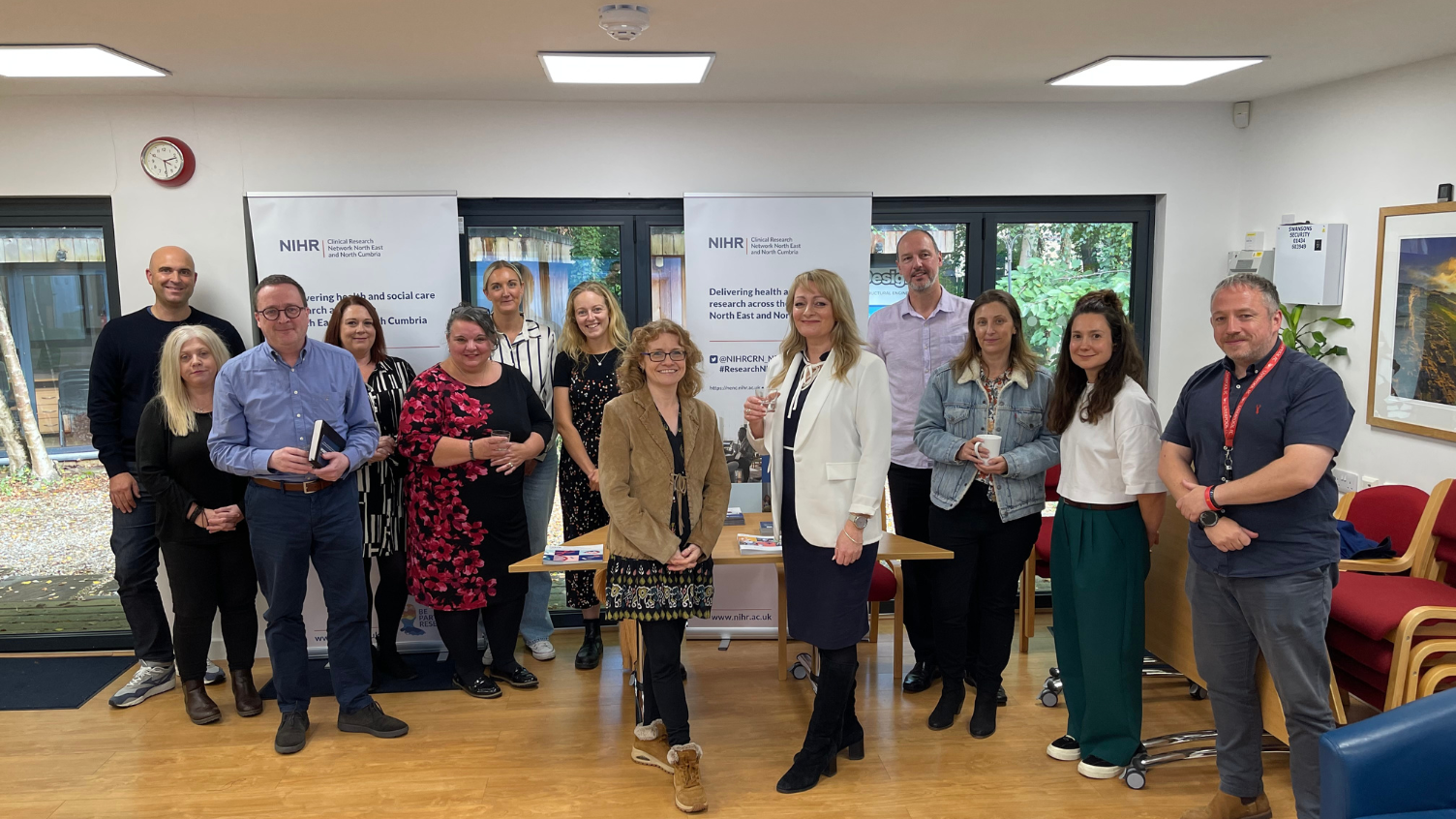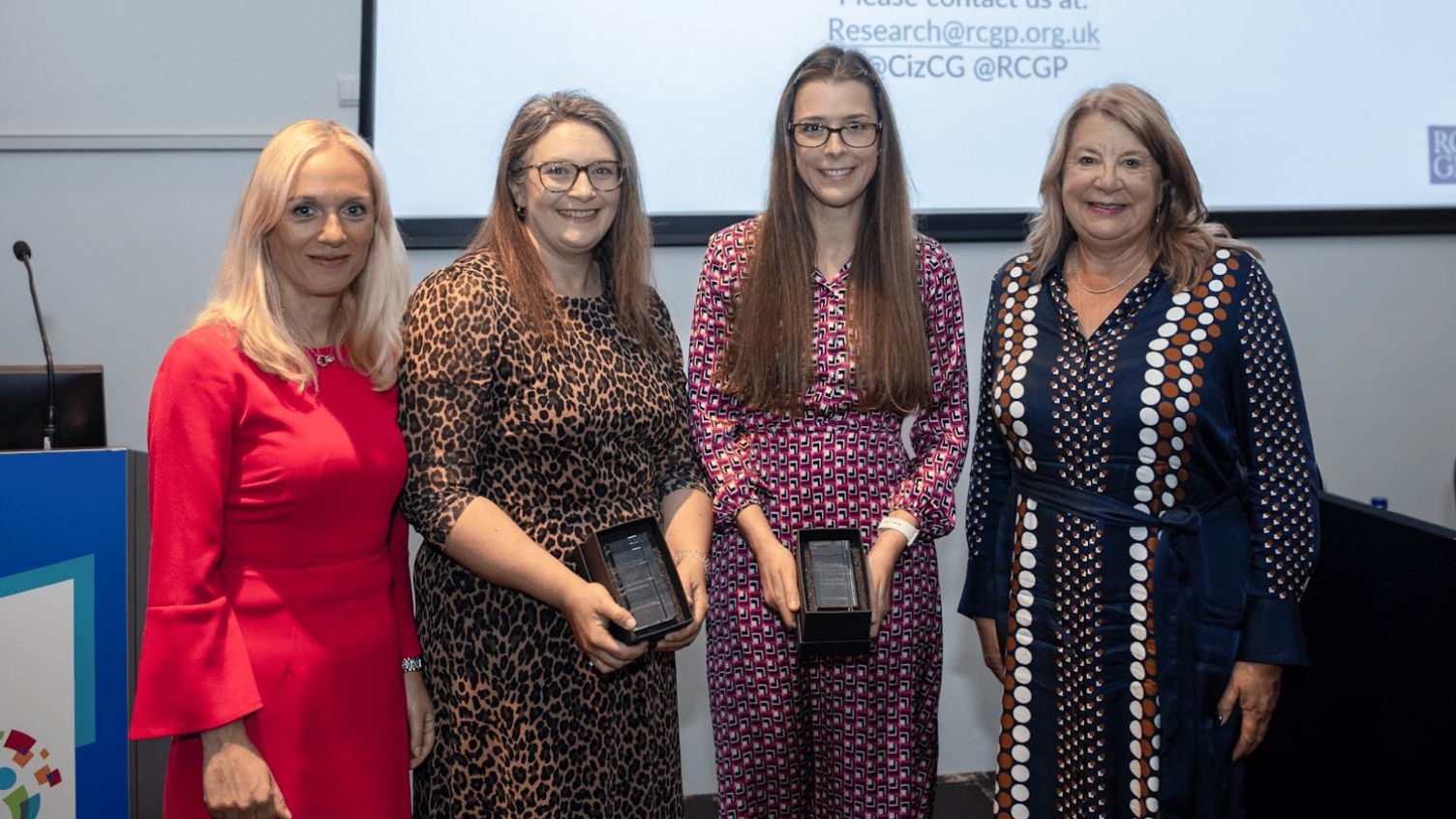Greatest research achievements in Kent, Surrey and Sussex: helping to eliminate Hepatitis C virus by 2030
- 16 September 2024
- 3 min read
To celebrate 10 years of the NIHR Clinical Research Network, we are looking back at our greatest research achievements over the past decade. This includes Kent, Surrey and Sussex-led research studies and those delivered in the region whose results have influenced and impacted clinical practice within the NHS and social care, locally and nationally.
This week's focus is on a liver based study which assessed and treated vulnerable adults in the community.
How many participants were recruited?
Approximately 900 adults took part in Brighton.

What is the background of the study?
Prof Sumita Verma (pictured middle), Professor of Hepatology at Brighton and Sussex Medical School, Hepatology Consultant at University Hospitals Sussex NHS Foundation Trust and CI for this study, said: “In 2016, the World Health Organisation mandated that Hepatitis C virus (HCV) must be eliminated by 2030. We knew that vulnerable adults who were homeless or in prison have a very high prevalence of both alcohol and substance misuse, consequently leading to infection with HCV and liver disease.
“These vulnerable adults often missed their hospital appointments, preventing them from receiving the urgent care they needed. Recognising this, we decided to meet them in a familiar community setting. We brought our treatment services to a substance misuse centre in Brighton, where we provided personalised, holistic care.”
What was the study investigating?
“Overall, we conducted three successful studies in Sussex, starting with ITTREAT study based at a large addiction centre in Brighton, followed by the VALID study based at GP practices and shelters for people experiencing homelessness in Brighton, and finally the END C study based at homeless sites all over Sussex. Our focus initially was on HCV and then extended to assessing and treating all cause liver disease in vulnerable adults.
“We were further investigating the feasibility of delivering a holistic decentralised model of care in the community and evaluating the service by collecting clinical, patient reported and health economic data”.
What did we learn from this study?
Sumita added: “By bringing care to these adults in the community, we found a very high engagement and compliance rate to treatment, as well as high HCV cure rates (> 80%). We showed significant improvement in quality of life after HCV cure, and this all could be achieved at modest costs.
“We demonstrated a whole new approach to care. If you invest in these individuals, you get a lot back in return. We offer non-judgmental support and personalised care, respecting their life choices. Our innovative methods have successfully ensured that these vulnerable patients adhere to their medication, which is a major achievement.”
What was the impact of this study?
Sumita added: “The most significant impact was our ability to engage with these individuals within the community. I learned so much from them. Connecting with these people has broadened my horizons and made me a better person and healthcare professional.
“The community-based model was adopted nationally by two of the largest Hepatitis C centres in England. The national Hepatitis C lead stated that, along with other factors, our model has made it easier to achieve HCV elimination. Our work has won multiple awards and resulted in multiple national and international presentations and publications. The European Centre for Disease Control and Prevention has acknowledged our work as a model of good practice.”
What’s next?
“As we have shown that this can be achieved locally, we now need to replicate this work nationally. We are working on submitting a grant application to facilitate this.”


